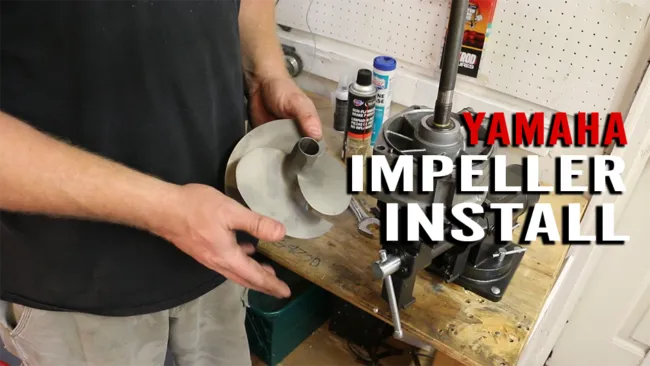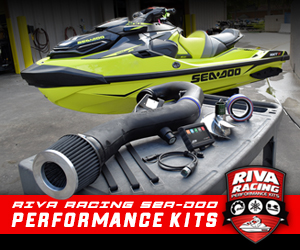Listen, we’ve all done it. Even the best of us. Sucking up a rock, stick or some other bit of debris is a pretty common phenomenon, and shouldn’t be the reason you hang your lanyard and sit out the rest of your riding season.
Despite all the today’s modern braking/reverse system, electronic trim controls and all that other nonsense, the standard layout of a PWC jet pump is still surprisingly simple and straightforward. This makes performing an impeller swap is surprisingly simple just as long as you take your time, have the right tools and follow these pretty simple-to-follow steps.
While enjoying our 2018 Yamaha GP1800 WaveRunner a little to close to shore, we passed a few rocks through our pump and incurred a bit of damage to our factory impeller. Smart enough to know we had done so, we immediately killed the engine after coasting to shore. Gratefully, the rock(s) had dislodged, allowing us to get home. (Some aren’t so fortunate.)
The assessed damage was gratefully minor: one blade’s leading edge was blunted and bent up ever-so-slightly. The other two blades had their sharpened edges dinged and dulled. Now, while flattened or dulled edges don’t sound too bad, they can lead to slowed acceleration, cavitation and lower top speeds, as well as vibrations (harmonics) that can cause severe engine and pump wear if not treated quickly. Wanting to ensure no further damage came to our Yamaha, a swap needed to be done.
Today, The Watercraft Journal is happy to provide you a very basic, beginner’s guide on how to perform this service in your own home garage. Make sure to pick up a Yamaha Prop Removal Tool from either RIVA Racing or the Greenhulk.net PWC Performance Store prior to commencing the job.
Other tools include a 14mm socket, a 5/32 Allen wrench or socket, a traditional flat-head screwdriver, 27mm (or 1 1/16″) wrench, a breaker bar or extension for the wrench (for leverage), and a sturdy 15-pound or heavier vise mounted to a workbench. Also pick up some good marine-grade grease and brake cleaner. We also suggest a MAP/PRO torch (propane isn’t going to cut it) to help loosen the impeller’s bite on the shaft threads.









